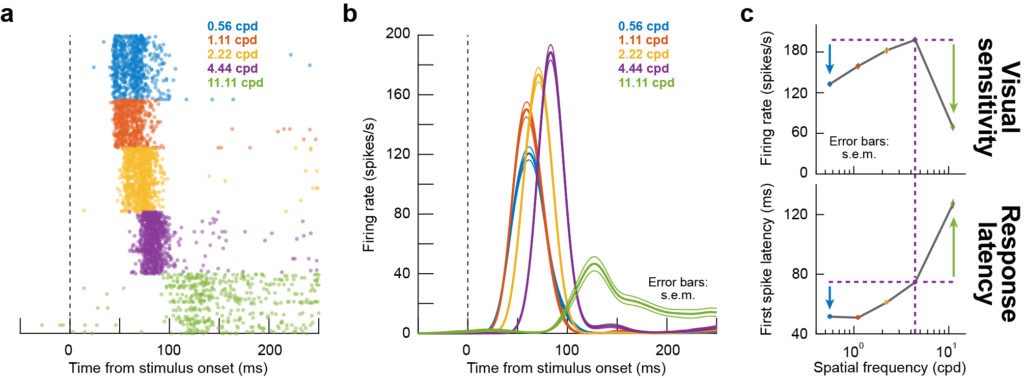
We have a new exciting paper in press at Nature Communications.
The paper continues our recent attempts at characterizing the visual functions of the primate superior colliculus (SC). Here, we characterized spatial frequency tuning characteristics of neurons in the SC.
We found that, indeed, SC neurons exhibit their own preferences for individual spatial frequencies. Interestingly, there was also an additional property, which was that SC neurons respond the fastest to low spatial frequencies, regardless of whether they prefer these small frequencies or not. This means that, in terms of the speed of responses, the SC may be thought of as providing a “turbo boost” for the processing of low spatial frequencies. This is interesting because natural images in our environment are dominated by low spatial frequencies. This means that the SC is really well optimized for the properties of the visual environment, as we also found recently in other contexts. Indeed, we confirmed that the “turbo boost” provided by SC visual responses is behaviorally relevant, because it facilitates rapid saccadic reaction times when we scan scenes using rapid eye movements.
An earlier draft of our study can be read on bioRxiv here.
